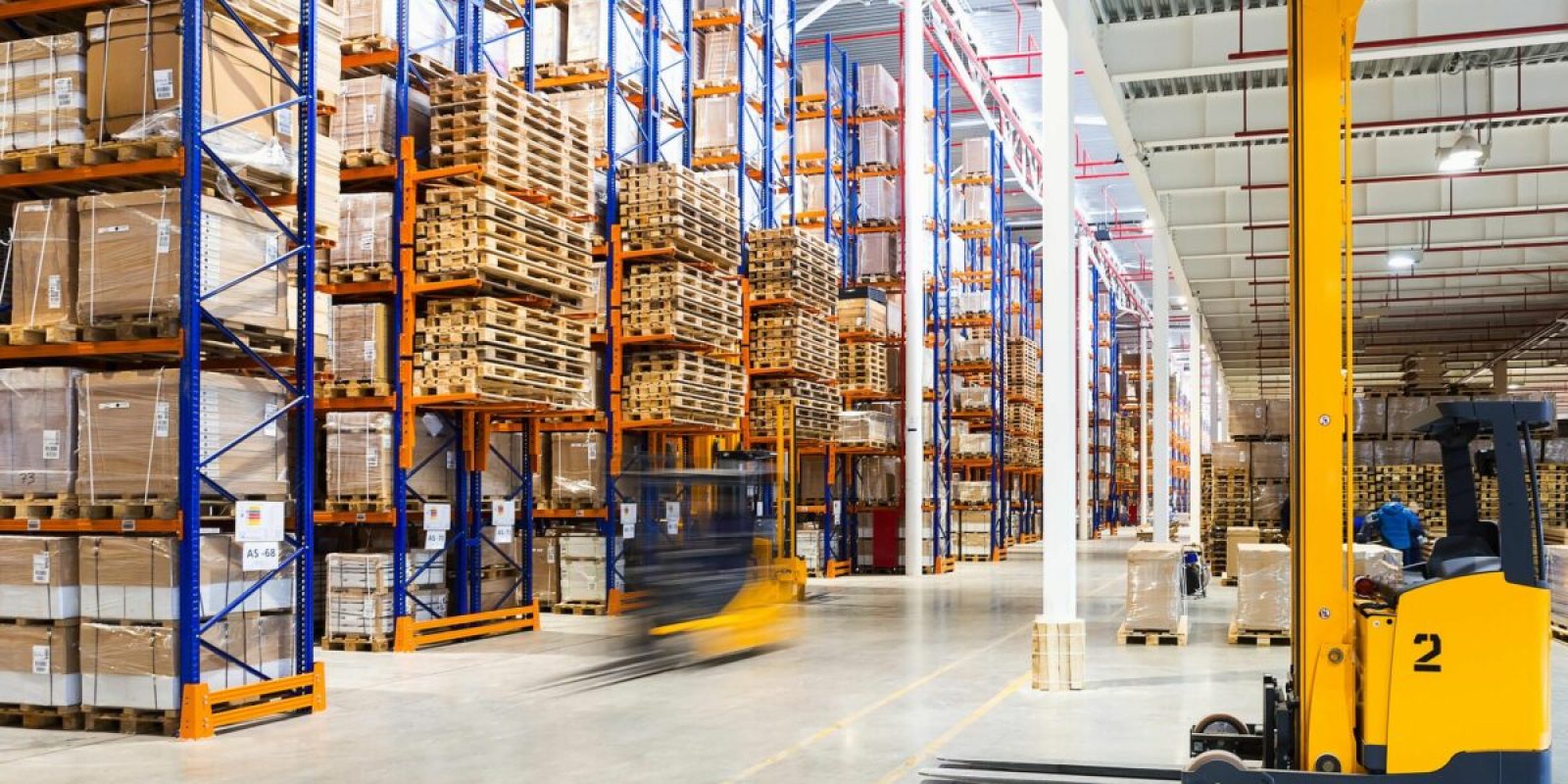Warehouses have been using basic slotting strategies for decades to determine optimal location sizes and SKU placement within the warehouse. These warehouse slotting optimization strategies have helped drive cost savings for omnichannel fulfillment in many ways. These include reduced replenishments, more efficient travel paths, and optimized space utilization and warehouse layouts.
Too often, though, warehouses will take the opportunity to slot during a facility design project but then not maintain slotting optimization regularly by re-analyzing shipment data. This results in missed opportunities to re-slot items into more appropriate location sizes or SKU location assignments.
What is Slotting?: How to Optimize Your Storage Capacity
Slotting is the process of organizing warehouse storage capacity to maximize efficiency. Warehouse inventory is organized by product characteristics like Stock Keeping Units (SKU), product type, item size, weight, order history, and more. Analyzing this data is important for implementing a warehouse slotting strategy that is tailored to your sales and inventory management.
Warehouse Slotting Goals
Weeks-On-Hand Inventory
The term ‘weeks-on-hand’ refers to how many weeks of orders could be filled with only the inventory that is in the pick phase. Fairly standard practice is for warehouses to have one to two weeks-on-hand for the majority of items, but some can have lower levels in some instances.
When implementing a new slotting process, the goal is to understand the specific business needs while working within the constraints of your warehouse design. For some warehouses with space constraints, it might be optimal to carry a higher weeks-on-hand inventory for faster-moving items and a reduced weeks-on-hand inventory for slower-moving items.
Other warehouses might choose to focus on item level and storage by moving slower-moving items to other areas of the building and carrying the same weeks-on-hand inventory for fast- and slow-moving items. Any strategies involving a larger weeks-on-hand inventory will reduce the number of replenishments, increase directed put-away to the primary location, and increase the availability of items for order fulfillment. This will also affect the amount of travel involved in the process.
Optimize Location Management with SKU Velocity
A primary goal of a slotting strategy is to reduce the travel distance in the pick path while working within the constraints of available space. The goal is to increase the pick density in the higher velocity aisles while reducing the wasted travel past slower-moving items. SKU velocity is a measure of how often a SKU is picked, which indicates how fast inventory moves and can be used to optimize inventory location. To optimize location management, first, determine the turnover speed of each SKU using ABC analysis.
Slower-moving items can then be moved to less desirable pick locations in the warehouse while minimizing the amount of travel to these areas. When possible, moving the fast-moving items closer to the receiving and shipping areas will also allow the reach truck drivers to travel a shorter distance when doing put-away tasks and taking orders to the outbound docks. This reduced travel path can play a part in getting items put away in a more streamlined manner and increasing the efficiency of your warehouse. Analyze product turnover at different times of the year to establish the average speed and velocity during peak demand periods.
Why Use Slotting In Warehouse Operations?
The benefits of slotting focus on warehouse operations and fulfillment and can provide peak optimization in this area. Some benefits include:
- Easy Order Fulfillment
- Faster Picking: Proper slotting ensures that frequently ordered items are placed in easily accessible locations. This reduces the time it takes for workers to pick items, leading to quicker order fulfillment.
- Reduced Errors: By organizing inventory in an intuitive manner, slotting helps reduce the possibility of picking errors. Workers are less likely to grab the wrong item when everything is logically arranged, enhancing accuracy in order fulfillment.
- Lower Operational Costs
- Improved Workflow: Efficient organization of inventory streamlines the workflow, making the picking, packing, and shipping processes faster and more efficient. This reduces the amount of time and labor required to fulfill orders.
- Cost-Effective Operations: With optimized slotting, businesses can lower their operational costs. Reduced picking times and increased accuracy lead to fewer returns and re-shipments, saving money on labor and shipping expenses.
- Preemptive Planning
- Predictive Inventory Management: Slotting allows businesses to plan ahead by creating space for future inventory needs. By analyzing sales data and trends, businesses can anticipate which items will be in high demand and ensure they are well-stocked in optimal locations.
- Reduced Stockouts and Overstock: With predictive planning, businesses can avoid the pitfalls of stockouts and overstock situations. Proper slotting ensures that inventory levels are balanced, leading to better inventory management and customer satisfaction.
- Additional Benefits of Slotting
- Enhanced Space Utilization: By organizing items based on their size, weight, and demand frequency, slotting maximizes the use of available storage space. This can free up room for additional inventory or new product lines.
- Improved Safety: Slotting can also contribute to a safer work environment. By placing heavy or bulky items in easily accessible locations and organizing the warehouse layout to reduce clutter, the risk of accidents and injuries can be minimized.
- Flexibility and Scalability: Slotting provides the flexibility to adjust to changing business needs. As demand patterns shift or new products are introduced, the warehouse layout can be reconfigured to maintain optimal efficiency. This scalability is crucial for growing businesses.
- Preemptive Planning: Slotting creates space to predict inventory needs, allowing businesses to stock up on what they need before they need it.
3 Reasons Why Re-Slotting Goes to the Wayside
Re-slotting refers to the process of reorganizing or rearranging inventory within a warehouse or storage facility to optimize space, improve efficiency, and enhance productivity. This can involve moving items to different locations based on various factors such as demand frequency, size, weight or picking routes. The goal is to reduce the time and effort required to retrieve items, minimize handling costs and improve overall warehouse operations. Despite the benefits of slotting, businesses are finding reasons not to slot or re-slot their warehouse or distribution center.
1. Bigger savings elsewhere
Some warehouses have stopped re-slotting because they have found bigger savings with the implementation of a newer Warehouse Management System (WMS), a Labor Management System (LMS), or they are optimizing their processes with new RF technology. These projects tend to come at a higher cost, with returns anywhere from 10-30 percent annually.
These types of improvements also require more support and monitoring from the workforce to maintain the system’s performance. This affects how companies apply resources to optimize savings across competing needs, including re-slotting.
2. Change in supply chain
Another reason some warehouses have stopped re-slotting is due to a change in their supply chain. For example, if a warehouse only shipped bulk quantities to storefronts but now is shipping smaller quantities to the customer’s door, picking operations from both quantities are in the same location, making re-slotting more challenging.
Warehouses are meeting this challenge by separating items into two different areas: one area for single picks and another for case picks. This ensures that the picking process and location size can be optimized for both types of orders. There might also be a space constraint when deciding if two picking areas are possible. At this point, some warehouses have chosen to give up on their re-slotting efforts and look for savings somewhere else.
3. Growth
Some warehouses and fulfillment centers have seen so much growth in their business that they have not had time to implement any re-slotting strategies. This can also be the case when a smaller warehouse starts moving higher volumes of product, especially when they do not have technical resources to help in re-slotting efforts. With a high-growth rate, these warehouses simply do not have the time or resources to optimize their location sizes and SKU placement.
Of course, there could be other reasons why a warehouse has not been re-slotted, or it could be a combination of any of these. Or maybe you do re-slot annually but are finding it harder and harder to slot effectively and maintain the optimal inventory level. It could be that you have a smaller warehouse and are not worried about how your items are slotted.
There are a few basic warehouse slotting best practices that can help reduce inventory replenishments and improve pick and pack productivity, including analyzing weeks-on-hand inventory and segregating items by velocity categories to reduce travel distances.

Successful Warehouse Slotting
Learn the essential elements of a warehouse slotting plan and the primary reasons for engaging in a warehouse slotting project.
Improve Your Warehouse Slotting Optimization
For the development of your warehouse slotting strategies, let enVista engineers work with your team to design a tailored strategy for you. Our engineers will map out your processes in the warehouse, addressing any constraints in your warehouse layout or warehouse management system (WMS) while meeting your short-term and long-term goals.
Our slotting analysis team leverages historical data to understand current warehouse performance and employs Pareto Analysis to determine which items are commonly ordered versus those that seldom leave the shelves. We then use warehouse slotting analysis tools to determine the optimal location sizes and SKU placement within the entire warehouse. This leads to optimal weeks-on-hand inventory, reduced travel time, reduced fulfillment costs and less time spent doing replenishment. Contact enVista today to learn more.







